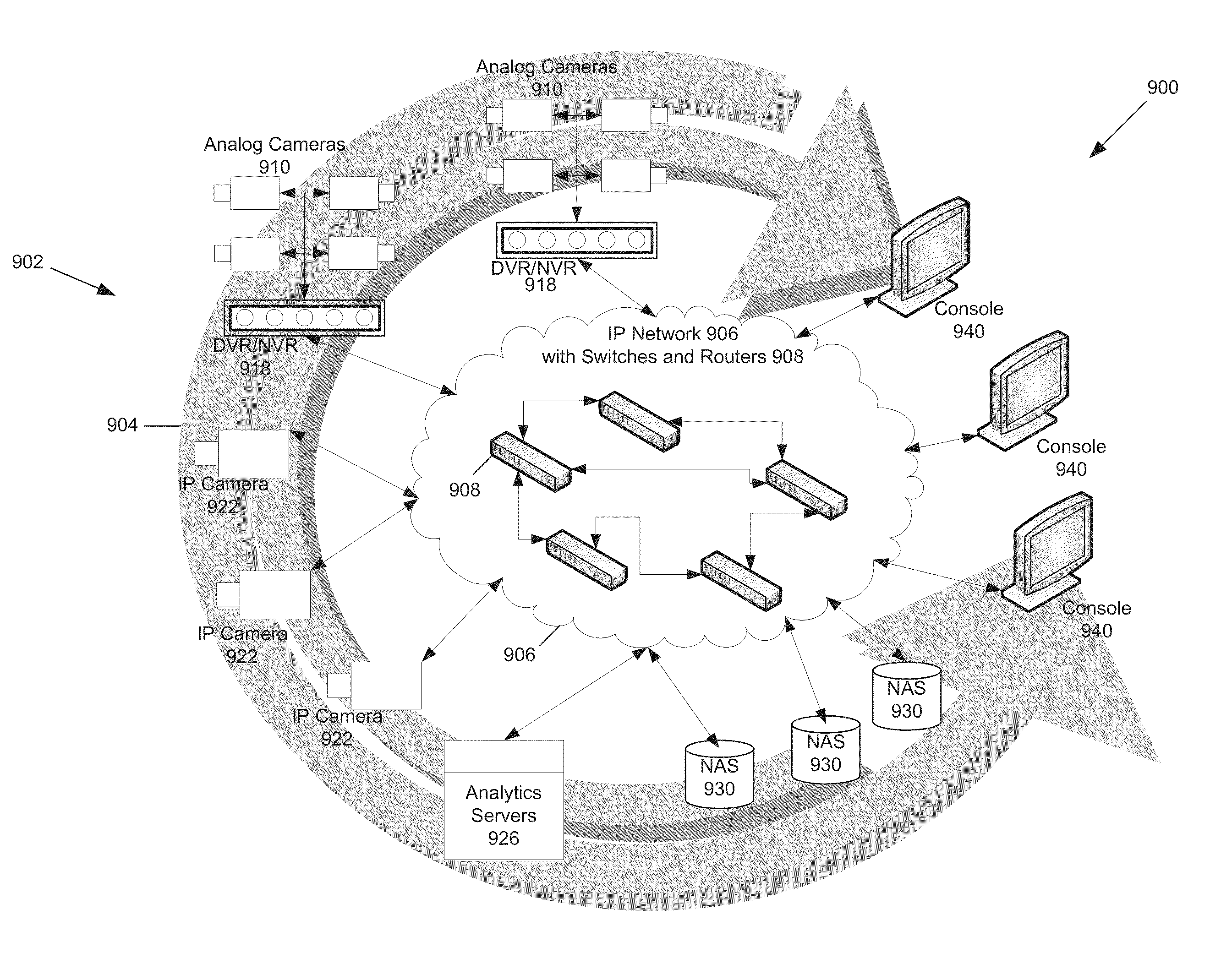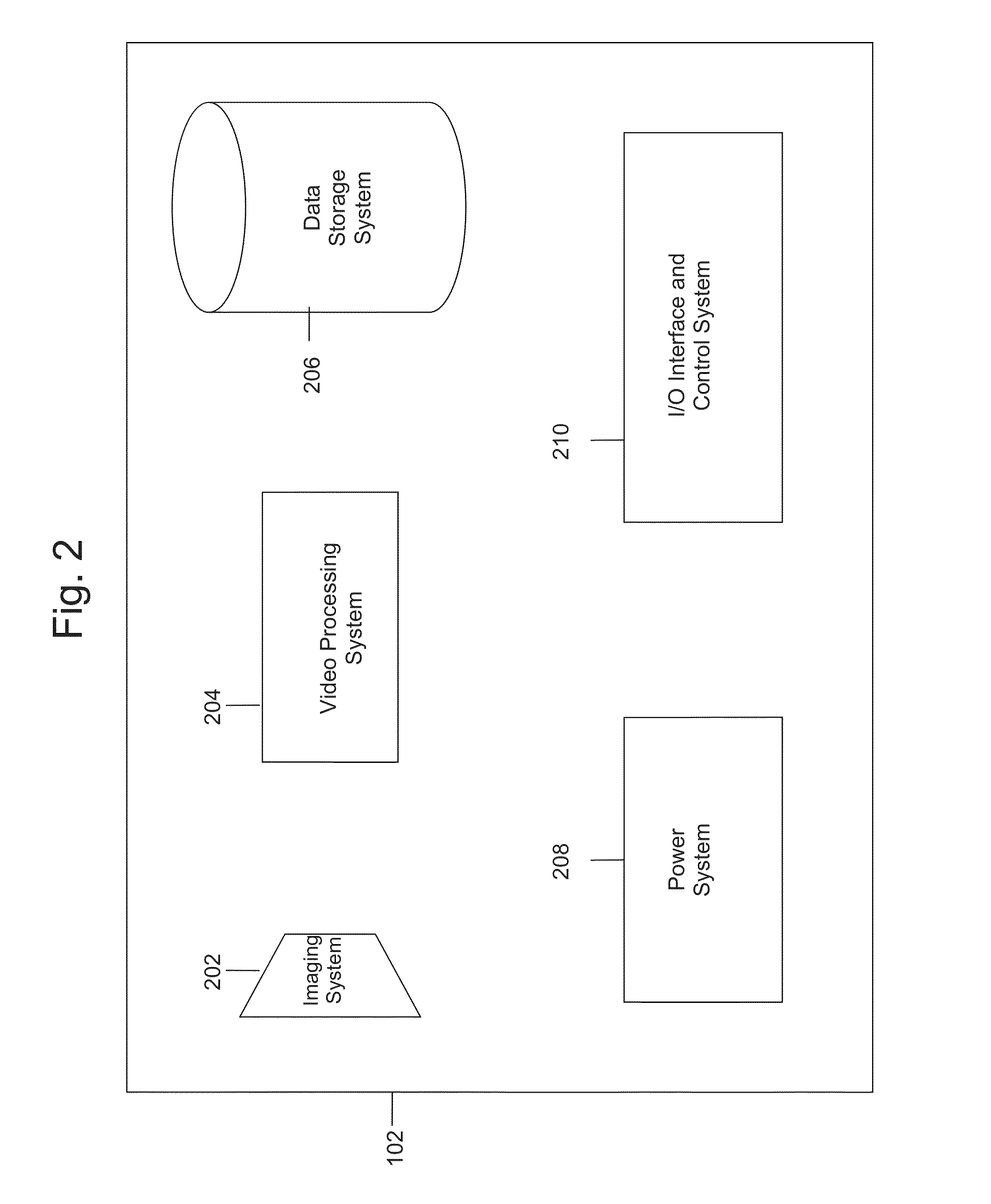Content-aware computer networking devices with video analytics for reducing video storage and video communication bandwidth requirements of a video surveillance network camera system
a video surveillance and network camera technology, applied in the field of video imaging systems, can solve the problems of large amount of bandwidth and storage capacity, complex camera network, and relatively slow industry adoption, and achieve the effect of eliminating the majority of network bandwidth requirements
- Summary
- Abstract
- Description
- Claims
- Application Information
AI Technical Summary
Benefits of technology
Problems solved by technology
Method used
Image
Examples
first embodiment
of Content-Aware Storage
[0037]A first embodiment of network camera 102 is described in more detail with reference to FIG. 3. Video processing system 204 includes a rules based engine 302, video analytics 304, and a storage management system 306, some or all of which may be implemented in software. Video analytics 304 includes video analytics software operating in a video analytics processor.
[0038]Video processing system 204 may also include video encryption capabilities to prevent unauthorized viewing of video information. Imaging system 202 captures a field of view and generates video data representing the field of view. Imaging system 202 may be programmable and may be capable of producing multiple quality levels of video data, including higher quality (HiQ) video data and lower quality (LowQ) video data. A quality level refers to multiple video parameters including resolution, frame rate, bit rate, and compression quality. For example, HiQ video data may represent D1 resolution v...
second embodiment
of Content-Aware Storage
[0055]A second embodiment of camera 102 is described with reference to FIG. 5 and includes imaging system 202, video processing system 204′, and data storage system 206. Video processing system 204′ of the second embodiment includes video analytics 304 and an image processing unit 502. Image processing unit 502 generates video data to be communicated to central monitoring station 104 and stored in data storage system 206 and remote storage unit 116. Image processing unit 502 may be capable of compressing D1 resolution video data according to the H.264 / AVC standard at 30 fps. Image processing unit 502 may be, for example, a Freescale Semiconductor® i.MX27 multimedia applications processor. Video analytics 304 analyzes data to determine whether the data contain predetermined types of content. Video analytics 304 may be capable of performing MPEG4 / CIF encoding. Video analytics 304 may also deliver video data to a PAL / NTSC monitor (not shown). Video analytics 304...
third embodiment
of Content-Aware Storage
[0068]As described in this section, content-aware computer networking devices (also referred to as network infrastructure devices) improve the quality of service in hybrid networks that include both sensor networks and data networks (e.g., conventional IT networks).
[0069]Many conventional network infrastructures are optimized for traditional data networks primarily carrying client-server models of communication in which servers are data rich and are outnumbered by clients requesting data. Clients request data from the servers and the client-side communications occur in bursts. For example, in the case of server-hosted video streaming, a small number of servers multicast or unicast information to a larger number of clients. This one-to-many transmission of video streams is a basic assumption underlying storage and bandwidth optimization techniques found in conventional computer networking devices deployed in bandwidth-intensive applications. Thus, one-to-many ...
PUM
 Login to View More
Login to View More Abstract
Description
Claims
Application Information
 Login to View More
Login to View More - R&D
- Intellectual Property
- Life Sciences
- Materials
- Tech Scout
- Unparalleled Data Quality
- Higher Quality Content
- 60% Fewer Hallucinations
Browse by: Latest US Patents, China's latest patents, Technical Efficacy Thesaurus, Application Domain, Technology Topic, Popular Technical Reports.
© 2025 PatSnap. All rights reserved.Legal|Privacy policy|Modern Slavery Act Transparency Statement|Sitemap|About US| Contact US: help@patsnap.com



